Motorhome travel: Walking in Portugal
Portugal might look like a small country on the map but it packs in variety with mountains, castles, captivating villages, handsome cities and a stunning coastline. The Portuguese people are friendly and welcoming and they make excellent wine and delicious cakes – no wonder we love it there! On this trip we planned to travel from north to south and explore the gorgeous countryside on foot and bicycle, the best pace at which to see this laid-back country.
Discover Portugal’s only national park
The northern Peneda-Gerês is Portugal’s only national park. This mountainous area, where nature and traditional architecture overlap, is scenically beautiful. Here are tree-covered slopes, granite farming villages that tumble down hillsides and long-horned barrosã cattle grazing on high meadows. Cobbled lanes lead to stone-faced terraces that flow along the contours of the hills, dotted with hay and corn stacks.
Entre Ambos-os-Rios, only 12 miles from the Spanish border, is well placed for walks that unearth the story of farming among these hills. Generations of backbreaking work created the terraced fields for corn, with vines grown on granite pergolas around the boundaries, the dripping black grapes encouraging us to reach up and taste the sweet fruit as we pass.
Near the high village of Germil we found a wolf trap: a V-shape of walls running down the hillside enabling farmers to funnel a trapped wolf into a pit. In the shady lanes of Sobredo, we discovered traditional cork and thatch beehives and tall hayricks that looked like something from the cartoon, Scooby Doo.
The area’s iconic farm building is the espigueiros. When corn was introduced to Portugal 300 years ago, it transformed the Peneda-Gerês as the cobs could be stored through winter in espigueiros. Many of these three or four-metre-long structures are over 200 years old, with slatted sidewalls allowing air to circulate and stone toadstool-shaped supports to keep vermin out. What appear today to be decorative buildings are eminently practical and they are everywhere. The village of Sistelo has attractive examples filled with colourful fresh corn cobs.
With clear bathing pools in the river on the ascent, caramel-coloured barrosã on the high plateau and spectacular views, the walk to the isolated village of Ermida was another fantastic excursion. Ermida is beautifully situated among the mountains and the village is a labyrinth of streets that are the haunt of cows, cats and sleepy dogs in the afternoon heat. We continued on walled cobbled tracks to Bilhares. Crickets bouncing around us and lizards darting over rocks, a bubbling stream and large, shady, sweet chestnut trees made this pleasant walking.
The Peneda-Gerês is more rugged around Campo do Gerês and there are plenty of waymarked trails. The Eagle Trail climbed to a col with glorious views and a true sense of being among the mountains. After an arduous descent through fruiting strawberry trees and flowering heather, we reached the Geira Roman Road. Constructed from large granite boulders, here the road follows the reservoir shore with views to rugged peaks. The path opens out at a collection of inscribed Roman milestones.
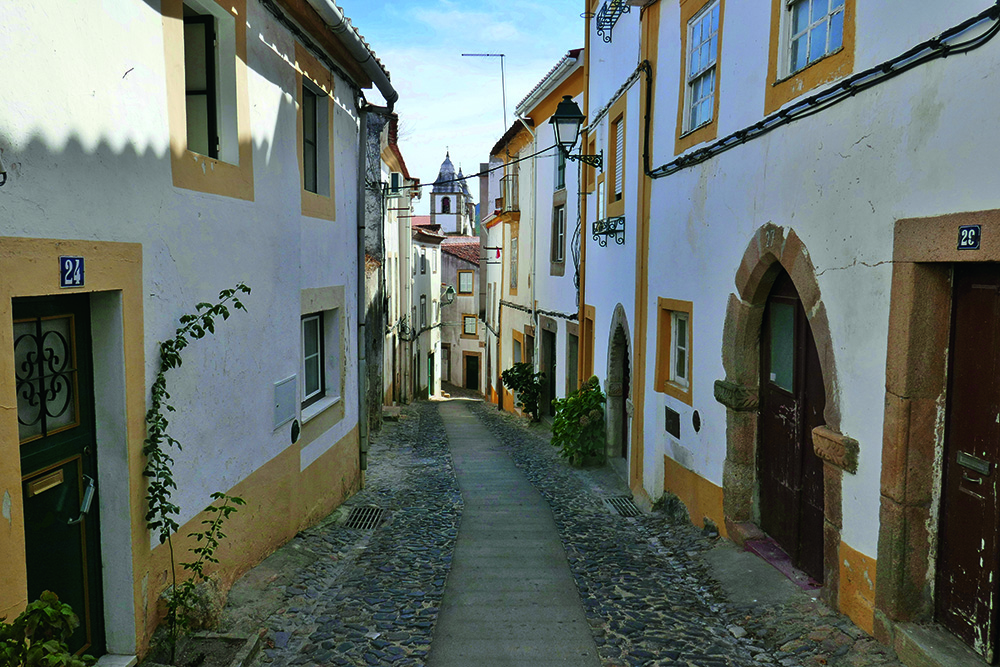
After cycling from Arco de Baúlhe on an old railway line (an ecopista) and visiting the town’s charming railway station museum, decorated with beautiful tiling, we took the scenic road from Amarante to the River Douro, stopping on the way to take in the view and impressive vineyards. Around us were steep hillsides covered in snaking rows of green vines, dotted with white villas. Below the wide river was busy with boats.
The River Côa, a Douro tributary, held onto a secret for millennia. In this valley are 5,000 etched animal figures on rock faces, created by artists with quartz implements up to 20,000 years ago. The Côa rock art was hidden until the 1990s when it was discovered during preparation for a dam, which was then abandoned. Today, only guided visits are allowed in this scenic valley.
The nearby town of Mêda has a good municipal campsite and walks to the neighbouring villages of Marialva and Longroiva. Slivers of quartz glint in the sunshine on the sandy tracks winding through almond and olive groves and below granite crags. Marialva is reputedly named after a pretty Moorish princess who was cursed by a witch and given goat’s feet. She eventually threw herself from the castle tower. We had our picnic in the shade of this tower looking over cultivated fields, the swooping antics of crag martins taking my mind off the princess’ sad tale.
Exploring the Serra de Estrela mountain range
The Serra de Estrela mountain range in central Portugal is a protected area that has plenty of craggy drama and includes Torre, the highest point on mainland Portugal at 1,993m (6,539ft). Manteigas is in the heart of the Estrela, a warren-like town magnificently situated at one end of the stunning 13km-long (8-mile) Zêzare Glacier Valley and we stopped to buy some local tangy sheep’s cheese.
The well-organised Quinta das Cegonhas campsite has leaflets for a dozen local walks in the Estrela. My favourite was a varied walk to Folgosinho, Portugal’s second highest village. We climbed through grassland to Gravanho, a 948m (3,110ft) high peak with wide views over the plains, before contouring through sweet chestnut and pine to Folgosinho. In the tidy village the most activity was at the communal wash house, where two women chatted over their laundry.
We descended on stony tracks between terraces of apple, fig and walnut trees and passing an old tungsten mine. South of the Estrela is the mountain village of Piódão. We took the ’van on the single-track and potholed road from Vide that was only passable because no other fools were using it (there are better routes). The houses of Piódão are tightly packed into the hillside, uniformly built from local chestnut-brown schist slate and punctuated with highlights of bright blue paintwork. The meandering slate alleys and steps are delightful to explore and plenty of walking trails start from the village.
Heading for the Spanish border
After a few days of culture in the city of Coimbra and at the Roman town of Conímbriga, we returned to rural Portugal. The landscape changed dramatically after we crossed the River Tagus (Rio Tejo). The sinuous roads and stone houses gave way to a flatter landscape with straight roads and whitewashed buildings. We were heading for the Serra de São Mamede near the Spanish border, where hills emerge from the plains.
We struck lucky when Dolf, who owns the Castelo de Vide campsite, almost overwhelmed us with walking guides. With Dolf’s guides in the rucksack, we headed out walking. Walled tracks by scattered farms and cork oak trees took us on to the São Paulo ridge. Here we were rewarded with spectacular views over Castelo de Vide and its castle. Continuing uphill we reached a picturesque chapel and spring before picking up medieval cobbled lanes downhill to Castelo de Vide, where white and yellow houses line steep and cobbled streets.
Dolf booked us a taxi to the village of Marvão, perched on a lofty escarpment. After exploring the castle and walls, we headed out on the well-signed route back to Castelo de Vide, which wound precipitously down a boulder track. Losing sight of Marvão, we had far-reaching views across olive groves and vines peppered with white farmhouses.
Fóia, at 902m (2,959ft), is the highest point of the Serra de Monchique in the southern Algarve region. Although the summit is cluttered with buildings and telecommunication facilities, it is a great viewpoint over the coastline. We hiked downhill, enjoying sweeping views and the shade of fragrant walnut trees. You can overnight on Fóia and we seized this outstanding opportunity to look down on the sun setting over the Atlantic and more star-gazing.
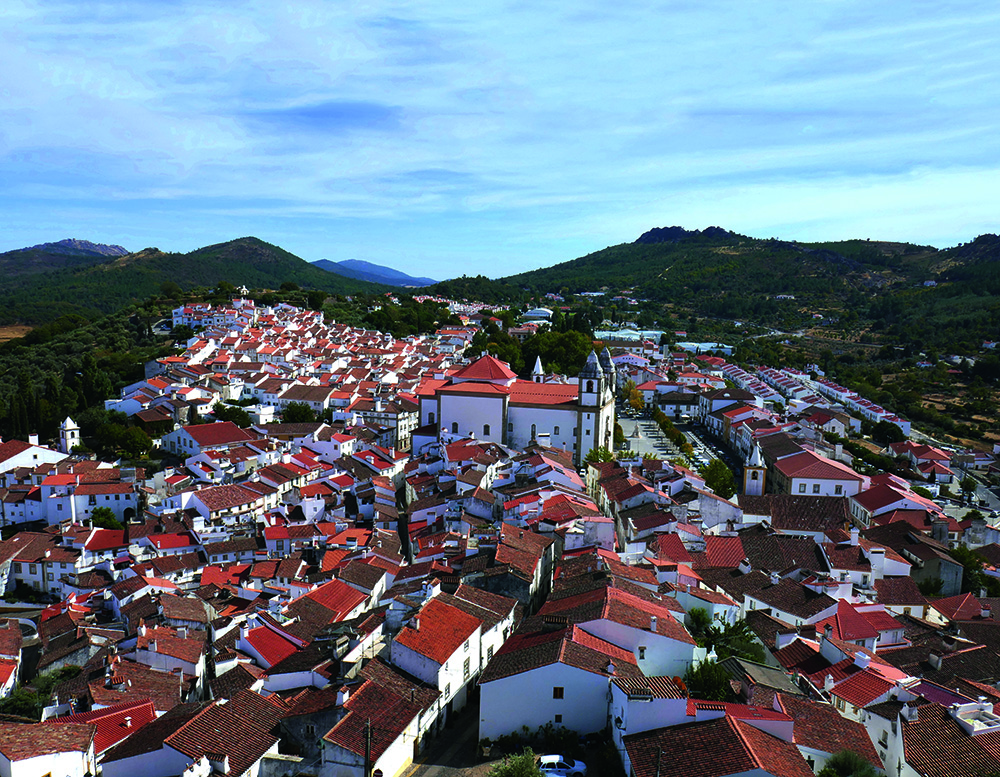
Picota is the second highest Serra de Monchique peak and we enjoyed the shady and cool woodland ascent from the market town of Monchique. The broad mountaintop is a granite slab with views over the trees to Fóia. After staying in Alvor and an entertaining visit to Sand City near Pêra, with hundreds of huge sand sculptures, we headed north to the Alentejo.
We visited the Roman city of Évora, handsome Beja and, my favourite, Serpa, which has more cafés than the 15,000 residents can surely need, giving it a relaxed and laid-back atmosphere that encourages visitors to wander its winding streets of white-washed houses, explore its castle and aqueduct and maybe walk through the olive trees to the River Guadiana.
We hung around Elvas near the Spanish border, joining ’vans parked alongside its striking medieval aqueduct and followed the line of the aqueduct to the zigzag of walls of this fortress city. Exploring the old town we found the Igreja das Domínicas octagonal chapel, with medieval tiling and columns painted with delicate leaves and flowers. From the castle with Moorish origins, we walked down meandering streets to the English Cemetery, a peaceful green haven remembering soldiers who died in the Peninsular Wars. Elvas is a real gem and justifies its World Heritage status.
We then had to reluctantly leave Portugal but know we will be tempted back by its network of little-used pastoral tracks radiating from scenic villages that provide plenty of opportunities for walking, as well as its diverse wildlife, stunning architecture and engaging history.
To find a list of the various motorhome-friendly campsites Carol used in Portugal, click here.






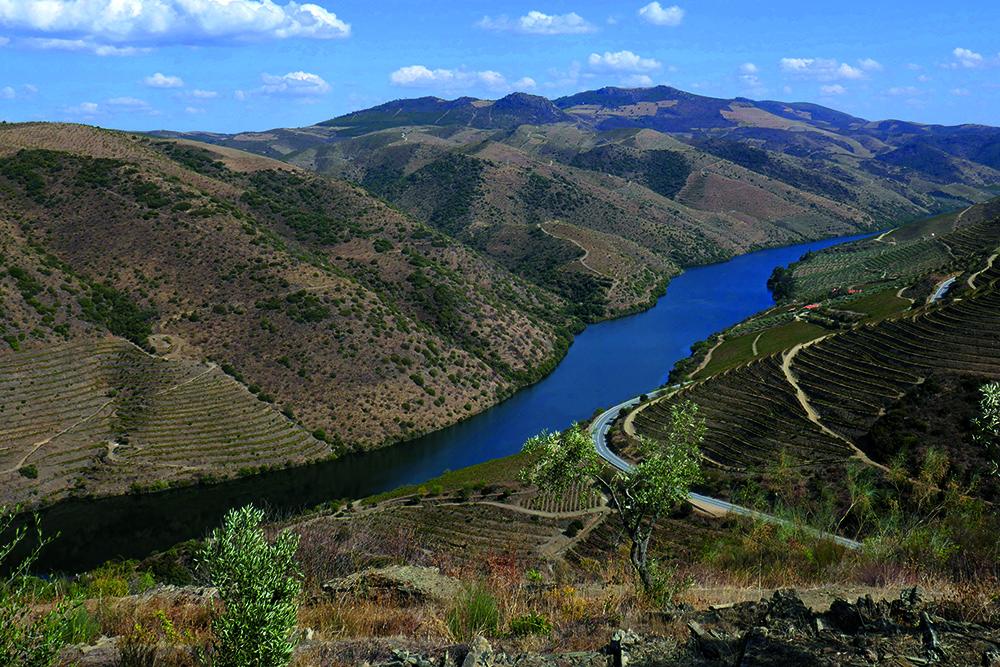
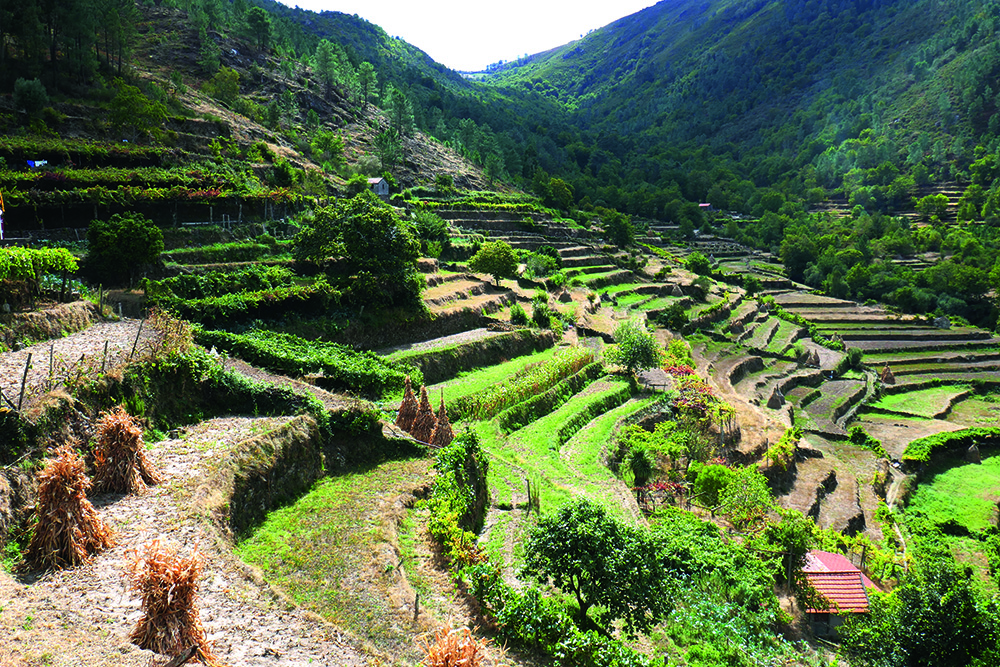
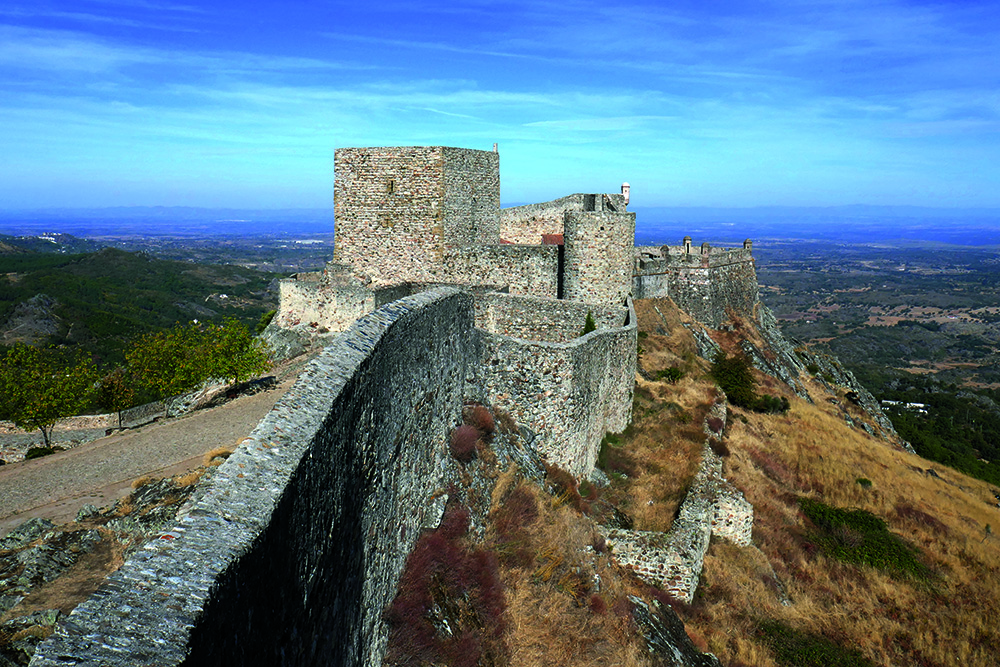
.jpg)


Recent Updates
Engine management lights: all you need to know
What is the engine management light? What does it mean, and what do I have to do? ...
Motorhome air suspension: all you need to know
Motorhomes are heavy and the additional weight of equipment and height of the bodywork can increase the loads ...
Motorhome WiFi: how to get better motorhome internet
Staying connected on the move is more and more essential, so relying on campsite WiFi isn't an option – here ...
A class of their own - our guide to A-class motorhomes
Thinking of trading up to an A-class, or even going straight to the top of the motorhome tree? We guide you ...
Explore overseas on a motorhome dream tour
Enjoy exotic travel in a campervan or motorhome by hiring, swapping with someone else or exporting your ...
Motorhome water systems: everything you need to know
On-board water is an important part of every motorhome – here’s everything you need to know ...
Campervanning in Europe: what you need to know
Whether you're planning a leisurely drive through the French countryside, navigating bustling city streets in ...
Campervan security: all you need to know
With thefts on the increase, it’s important to know how to keep your campervan secure and prevent campervan ...
Campervan furniture: everything you need to know
Our campervan experts guide you through all the essentials for your campervan, including tables, chairs, ...
Campervan finance: how to fund your purchase
Here we look at the different types of campervan finance available, to help you decide what’s the best option ...
Other Articles
Britain’s best used motorhomes
Want a great motorhome without paying the premium for a new one? Here's a guide to the best you can get in the pre-owned market for each layout, ...
Which motorhome? Choosing the perfect motorhome for you
Choosing a motorhome or campervan is one of the biggest buying decisions you’ll ever make, so it's important ...
Campervan washroom essentials: stay fresh on the road
Our guide will take you through the campervan washroom essentials you'll need so you're well-prepared for ...
Dogs in campervans: all you need to know
Follow our advice and your dog will enjoy campervanning as much as you do ...
Electric campervans: all you need to know
Our guide will take you through everything you need to know about electric campervans and what the future ...
Motorhome electrics: a complete guide to your motorhome electrical set-up
Motorhome electrics can dramatically enhance the convenience and comfort of your vehicle – but they can be ...
Lighting for campervans: all you need to know
We guide you through all the lighting options available for you and your campervan, including interior ...
Electric bikes for motorhomes: our ultimate guide
Read our comprehensive guide to electric bikes for motorhome owners, helping you add electric power to your ...
Our guide to 'cheap' motorhomes in 2024
If you're on the hunt for an affordable new motorhome, this is the best place to start – we've rounded up a ...
Campervans in winter: all you need to know
Here's your guide to preparing your campervan for the colder months, whether you will be using it or putting ...